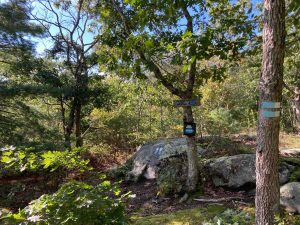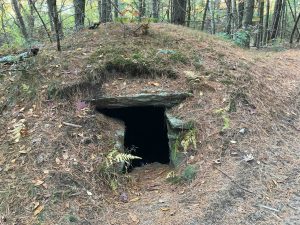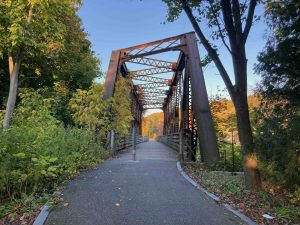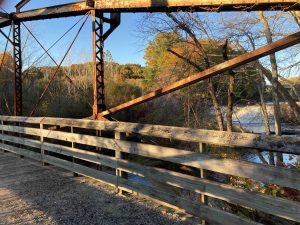
Explore Sterling, CT
Sterling at a Glance
Part of Windham County
If you’re looking for the best hiking trails in Sterling this is the complete guide to all the long trails, waterfalls, and history it has to offer.




My Highlights
- The bridges and stone chamber along the Moosup Trail
- The mill ruins to Pharisee Rock
Hiking
Town Parks
- None
Land Trust
- Wyndham Land Trust
- Laakso Preserve – Five acres with no trails
- Wyndham Land Trust
State Parks / Forest
- Moosup Valley State Park Trail –★★– 3.5 miles – Rails to Trails on mostly undeveloped trail with a couple nice stretches
- Pachaug State Forest
- Pharisee Rock –★★– 0.7 miles – Short but interesting trail past mill ruins up to seasonal views on the rock
Blue Blaze
- Pachaug Trail – 1.9 miles in town
- Wood River Picnic Area –★★– 1.9 miles –
- 0.8 mile road walk on Cedar Swamp Road to reach Hell Hollow
- Pachaug Trail – 1.9 miles in town
The Rest
- Oneco Stone Chamber (Pine Barrens Chamber) – Just off Moosup Valley Trail
Boating/Fishing
- Sterling Pond – 14 acre pond (Parking Link)
Originally part of Voluntown, this northern section separated and obtained town privileges from the State Assembly in May of 1794 making it the 102nd town in Connecticut.
Sterling was named in honor of a resident, Dr. John Sterling, who had promised to build the town a Library in return for this honor. He never followed through on this promise, but the town was forced to solicit private donations in order to build the library.
The first town meeting was held June 9, 1794, at the Dixon home on Sterling Hill.
The first post office was established as Sterling on Oct. 1, 1809.
The American Manufacturing Company, also known as Potter’s factory, was the first cotton mill in Sterling, c. 1800. It was situated on the Quandock River. The Sterling Manufacturing Company located in Sterling c. 1808, and was located on the Moosup River.
Local Industrialist William Pike pioneered in using chlorine as a bleaching agent for cloth and also established for the use of the dyer distilleries or sap works that would extract the first pyroligneous acid made in this country. His son James discovered a process of coloring with a fast black that was superior to any then in use. With the advent of the first railroad in 1854, which connected Providence with Hartford, distribution of materials became much easier and contributed to the economic base of Sterling. Oneco, a village within the town of Sterling, was named after Owaneco, son of the Mohegan Indian sachem Uncas, who claimed ownership of large tracts of eastern CT. land in the early colonial days.
About 1820 Henry Sabin built a cotton mill in Sterling.
In the 1850’s quarrying began in Sterling, and is still an active industry today.
{{locationDetails}}